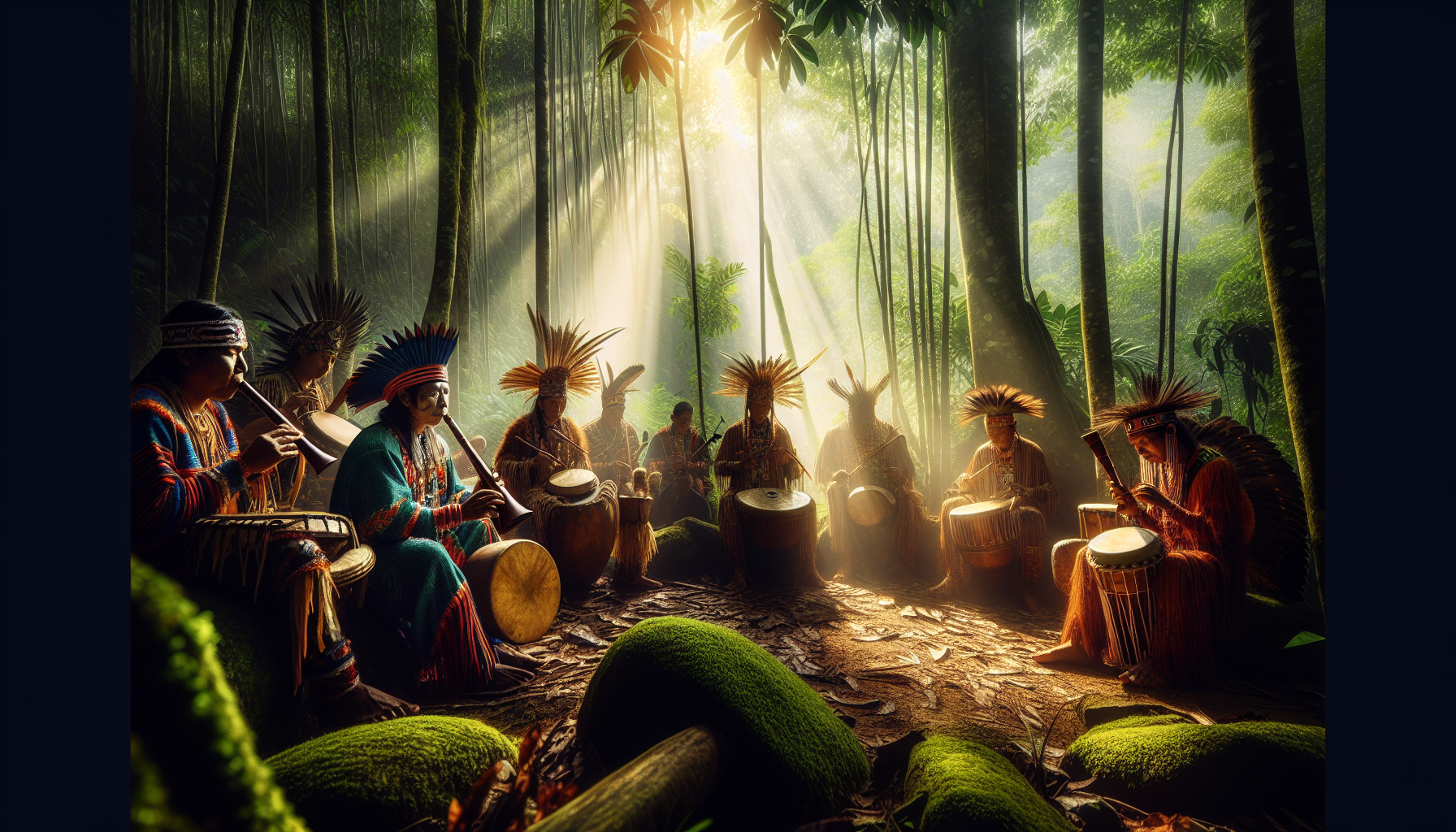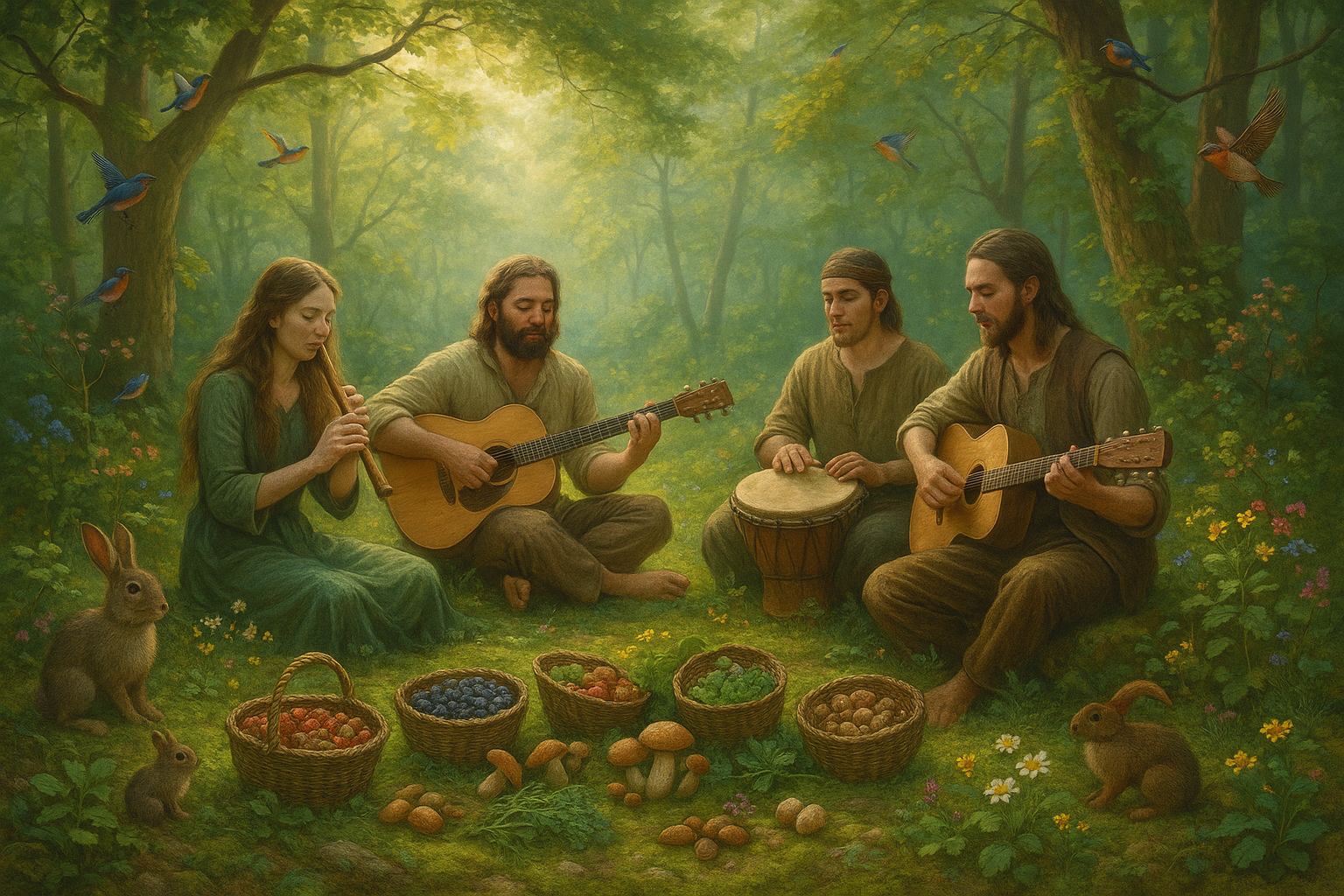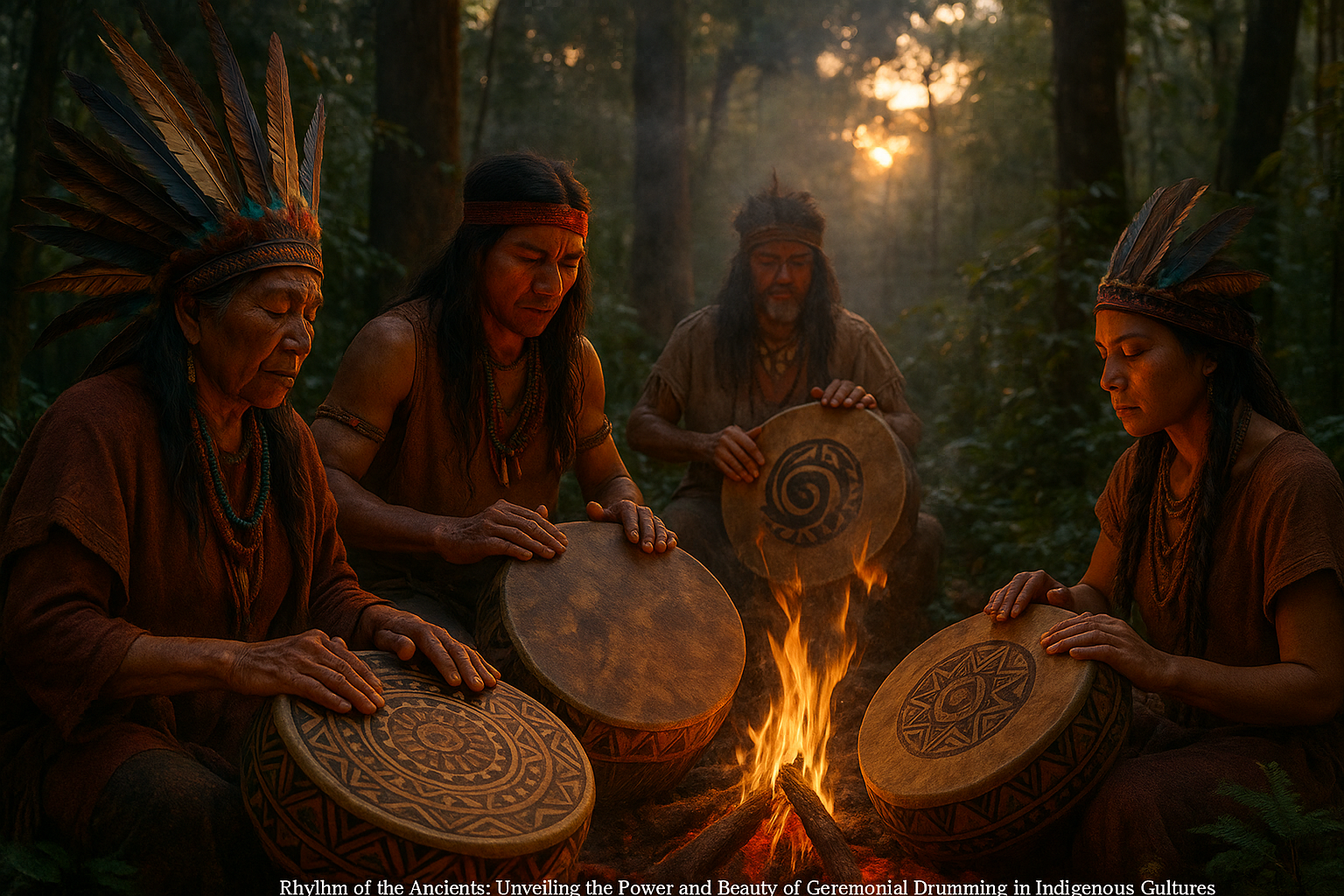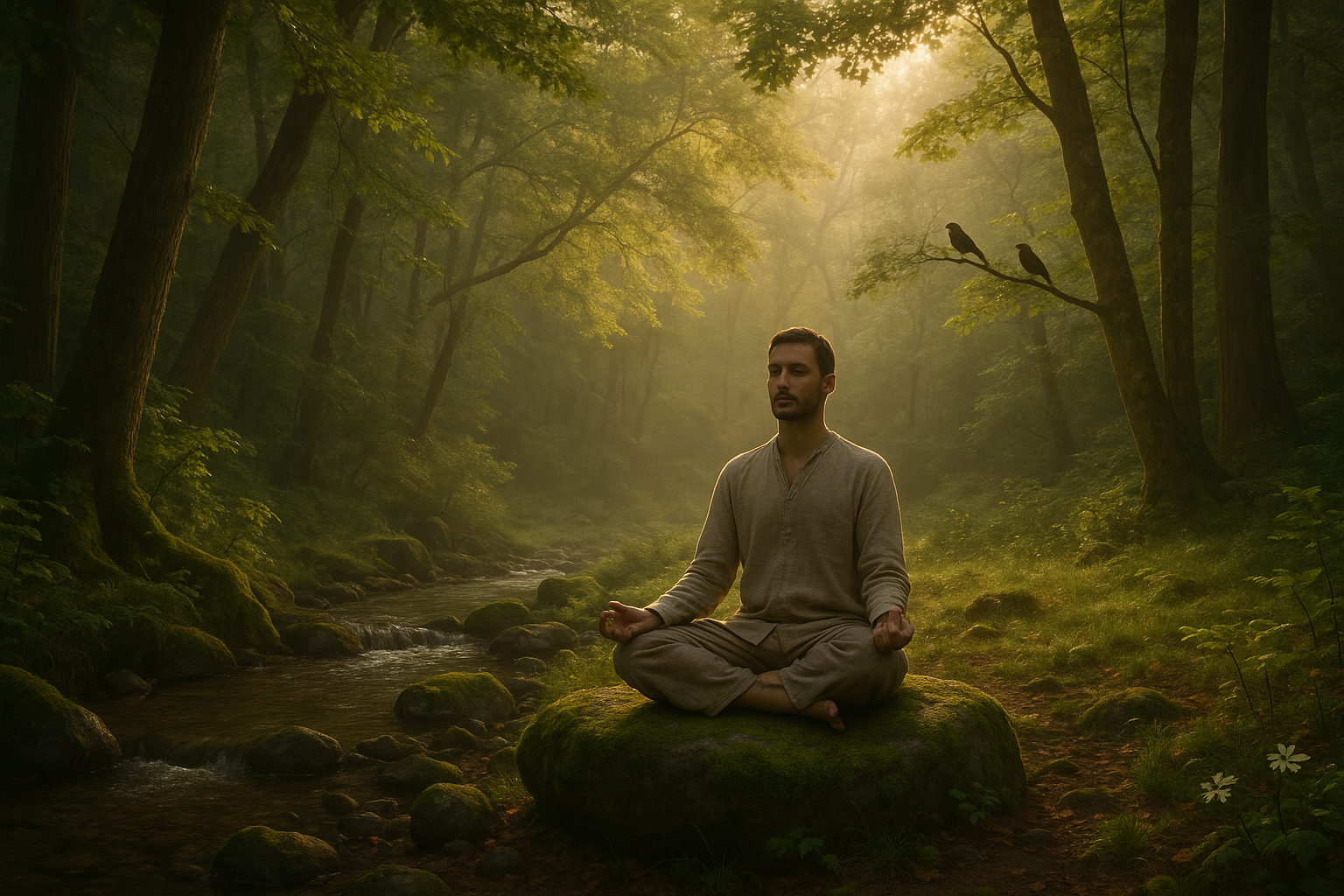In a world that often rushes forward, propelled by the relentless beat of modernity, there lies an underexplored realm where time dances to a different rhythm — the indigenous sonic territories. Here, in the soundscapes of native cultures, history whispers through the rustle of leaves, and the heartbeat of the earth reverberates through ancient drums. 🌿 These soundscapes are not just mere backdrops to the indigenous way of life; they are vibrant, living tapestries that weave together stories, traditions, and identities. This exploration is an invitation to immerse oneself in the symphony of sounds that have echoed through generations, offering a fresh perspective on the world and a deeper connection to the roots that bind us all.
The power of indigenous sonic territories lies not just in their musicality, but in their profound ability to connect people to their environment and to each other. For many native cultures, sound is a sacred element that transcends the boundaries of mere communication. It becomes a bridge between the physical and spiritual worlds, a tool for healing, and a means of preserving and passing down traditions. As we embark on this deep dive into the soundscape of native cultures, we’ll uncover how sound functions as a repository of knowledge, carrying the wisdom of elders, the myths of creation, and the lessons of survival. This journey will explore the ways in which these soundscapes serve as living archives, safeguarding cultural heritage in an ever-changing world.
Our exploration will take us through the diverse landscapes of indigenous communities, from the dense forests of the Amazon to the vast plains of North America. We will delve into the traditional instruments that produce these mesmerizing sounds, such as the haunting melodies of the Andean quena or the rhythmic pulse of the African djembe. Through these instruments, we will discover how soundscapes differ from one culture to another, yet share a common thread of unity and reverence for the natural world. 🥁 Furthermore, we will examine the role of storytelling and song in maintaining social cohesion and transmitting values across generations, highlighting the resilience and adaptability of these cultures in preserving their sound heritage amidst external pressures.
As we conclude our introduction to this rich and resonant topic, it is essential to acknowledge the contemporary challenges and opportunities that indigenous sonic territories face today. Globalization, technological advancement, and cultural appropriation pose significant threats to the preservation of these soundscapes. Yet, there is hope in the revival efforts led by indigenous communities and allies, who are harnessing technology to document and share their sonic heritage with the world. By embracing both tradition and innovation, these cultures are not only preserving their past but also crafting a future where their voices can be heard loud and clear. Join us on this journey as we unleash the power of indigenous sonic territories and celebrate the enduring legacy of native cultures, their sounds resonating as a testament to the richness and diversity of human expression. 🌎
Understanding Indigenous Sonic Territories
The exploration of Indigenous sonic territories offers a profound glimpse into the rich and diverse soundscapes that form an integral part of native cultures worldwide. Soundscapes are not merely backdrops to cultural practices; they are central to the identity and spiritual life of Indigenous communities. From the rhythmic beats of traditional drums to the evocative sounds of nature that are interwoven into cultural practices, these sonic elements play a crucial role in storytelling, ceremony, and community cohesion.
Indigenous sonic territories often reflect the geographical and spiritual landscapes of the peoples who inhabit them. The songs, chants, and instrumental music are imbued with meanings that are deeply connected to their environments. For instance, the sounds of the rainforest might influence the music of Indigenous groups in the Amazon, while the vast open spaces of the Australian outback shape the sonic expressions of Aboriginal communities.
In the digital age, these traditional soundscapes are experiencing a renaissance, with many Indigenous artists and communities utilizing modern technology to both preserve and innovate their musical heritage. This creates a dynamic interplay between the old and the new, offering opportunities for broader audiences to appreciate and engage with these rich cultural tapestries. As you continue reading, consider how these sonic territories resonate with broader questions of identity and cultural survival. 🎶
The Role of Sound in Indigenous Cultures
Sound plays a pivotal role in Indigenous cultures, serving as a medium for transmitting knowledge, history, and spiritual beliefs across generations. Traditional music and soundscapes are often intertwined with ceremonial practices, marking important life events, seasonal changes, and communal gatherings. These sounds are not just artistic expressions; they are living archives of cultural wisdom and tradition.
Many Indigenous communities view sound as a bridge to the spiritual world. For example, in the Inuit culture, throat singing is a practice that connects the physical with the spiritual, creating a unique soundscape that is both performative and meditative. In other cultures, such as the Native American tribes of the North American plains, the drum is considered the heartbeat of Mother Earth, grounding ceremonies in the rhythmic pulse of nature.
As these cultures face the pressures of globalization and modernity, there is a growing movement to revitalize and protect these sonic traditions. Digital platforms are increasingly being used to archive and share traditional sounds, ensuring that they remain accessible to future generations. This digital preservation is crucial, not only for maintaining cultural heritage but also for fostering a greater understanding and appreciation of Indigenous soundscapes worldwide.
Comparative Analysis of Indigenous Sound Practices
To appreciate the diversity and depth of Indigenous sonic practices, it’s helpful to compare the different approaches and instruments used by various cultures. The table below highlights some key elements of Indigenous music across different regions:
| Region | Indigenous Group | Main Instrument(s) | Sound Characteristics |
|---|---|---|---|
| North America | Native American Tribes | Drums, Flutes | Rhythmic, Deep, Earthy |
| South America | Amazonian Tribes | Rainsticks, Flutes | Natural, Harmonious, Melodic |
| Australia | Aboriginal Australians | Didgeridoo | Drone, Spiritual, Resonant |
This table illustrates the unique sonic footprints of different Indigenous groups, each contributing to the global tapestry of traditional music. As you explore these sounds, consider how they reflect the landscapes and cultural narratives from which they originate.
Modern Revival and Adaptation of Indigenous Sounds
The modern revival of Indigenous soundscapes is a testament to the resilience and adaptability of these cultures. Today, Indigenous musicians are blending traditional sounds with contemporary genres, creating new and innovative musical expressions. This fusion not only helps to preserve traditional soundscapes but also brings them to a wider audience, challenging stereotypes and broadening cultural understanding.
Many Indigenous artists are using platforms like YouTube to share their music with the world. These platforms provide a space for cultural exchange and collaboration, where Indigenous musicians can connect with global audiences. Check out this video that showcases a collaboration between traditional Indigenous musicians and contemporary artists.
The adaptation of traditional sounds into modern music also involves a dialogue about authenticity and cultural appropriation. Indigenous communities are actively engaged in these discussions, seeking to protect their cultural heritage while sharing it with the world. This ongoing conversation highlights the importance of respecting and honoring the origins of these soundscapes, ensuring that they are celebrated as living, dynamic cultural practices.
Key Players in the Indigenous Sound Revival
- Tanya Tagaq – An Inuit throat singer known for her innovative approach to traditional sounds.
- A Tribe Called Red – A Canadian group that blends First Nations music with electronic beats.
- Gurrumul – An Australian Aboriginal musician celebrated for his unique voice and storytelling through music.
These artists and others are at the forefront of a movement that is not only preserving Indigenous soundscapes but also pushing the boundaries of what they can become. Their work serves as an inspiration for future generations, ensuring that these rich cultural traditions continue to evolve and thrive.
Challenges and Opportunities in Preserving Indigenous Soundscapes
While the revival and adaptation of Indigenous soundscapes present exciting opportunities, they also come with challenges. One of the primary obstacles is the risk of cultural appropriation, where traditional sounds are used without permission or understanding, stripping them of their cultural context and significance. This can lead to the commodification of Indigenous music, reducing it to a mere exotic sound for entertainment.
To combat this, Indigenous communities and artists are advocating for greater control over their cultural products. They are calling for respectful collaborations that honor the origins and meanings of their soundscapes. This includes ensuring that Indigenous voices are at the forefront of any projects involving their music, and that they receive fair compensation and recognition for their contributions.
On the flip side, the global interest in Indigenous soundscapes offers a unique opportunity for cultural education and exchange. By sharing their music, Indigenous communities can educate audiences about their histories, values, and worldviews, fostering greater empathy and understanding. This can lead to a richer appreciation of the diversity and depth of human culture, highlighting the interconnectedness of our global community.
As we navigate these challenges and opportunities, it is essential to approach Indigenous soundscapes with respect, curiosity, and a willingness to learn. By doing so, we can help to ensure that these vital cultural expressions continue to inspire and enrich our world for generations to come. 🌍

Conclusion
Unleashing the power of Indigenous sonic territories is not just an exploration into the soundscape of native cultures; it is a deep, immersive journey that invites us to reconnect with a profound aspect of human heritage. Throughout this article, we delved into the vibrant world of Indigenous soundscapes, unveiling how these unique auditory experiences encapsulate the traditions, beliefs, and histories of native communities across the globe.
To recapitulate, we began by examining the historical significance of Indigenous soundscapes, emphasizing how they serve as living archives of cultural memory. These soundscapes, rich with the echoes of ancestral voices, traditional instruments, and natural symphonies, offer an auditory tapestry that is both timeless and alive. They remind us of the deep connection between Indigenous peoples and their environments, a relationship that is often expressed and preserved through sound.
Next, we explored the technological advancements that have facilitated the recording and dissemination of these soundscapes, allowing them to reach a global audience. This accessibility not only helps in preserving these auditory treasures but also in educating others about the diverse cultural heritages they represent. Technologies such as digital archiving and virtual reality have opened new avenues for experiencing and understanding these sonic territories, bridging the gap between ancient traditions and modern audiences.
We also discussed the challenges faced by Indigenous communities in maintaining their sonic heritage amidst the pressures of globalization and cultural homogenization. These challenges underscore the importance of supporting efforts to preserve and revitalize Indigenous languages and musical traditions, which are integral components of their soundscapes. Collaborations between Indigenous artists and non-Indigenous allies play a crucial role in ensuring these soundscapes are respected and cherished for generations to come.
Moreover, we highlighted several examples of Indigenous soundscapes from around the world, illustrating their diversity and unique characteristics. From the haunting flute melodies of the Andes to the rhythmic drumbeats of Australian Aboriginal communities, each soundscape offers a distinct auditory experience that reflects the rich tapestry of human culture.
Reinforcing the importance of this topic, we must recognize that Indigenous soundscapes are not merely artistic expressions; they are vital cultural narratives that carry the wisdom and resilience of native peoples. By engaging with these soundscapes, we gain a deeper understanding of the values and worldviews that shape Indigenous communities, fostering greater empathy and appreciation for their contributions to our global heritage.
In conclusion, the power of Indigenous sonic territories lies in their ability to transcend linguistic and cultural barriers, inviting us to listen, learn, and reflect. As we continue to explore and appreciate these soundscapes, we must also commit to supporting the Indigenous communities that sustain them. By doing so, we ensure that these vibrant cultural expressions remain an integral part of our collective human story.
We encourage you, dear reader, to further immerse yourself in the world of Indigenous soundscapes. Listen to these recordings, attend cultural events, and engage in conversations that celebrate and honor the sonic heritage of native cultures. Share your experiences and insights with others, for it is through dialogue and exchange that we can foster a more inclusive and understanding world.
To continue your exploration, consider visiting resources such as and First Peoples’ Cultural Council to access a wealth of Indigenous sound recordings and information about cultural preservation initiatives. Your engagement and support can make a meaningful difference in preserving these invaluable cultural legacies.
Let us embrace the power of Indigenous sonic territories and be inspired by the rich soundscapes that echo the voices of our ancestors. 🎶🌍
Toni Santos is a sensory storyteller and soundscape artisan whose work explores the forgotten language of the Earth through acoustic ecology storytelling. With a deep reverence for the natural world’s sonic textures, Toni crafts narratives that awaken our ears to the subtle music of forests, winds, waters, and wild silence.
His creative journey is rooted in a desire to preserve and interpret the acoustic heritage of environments, both ancient and fragile. From the echo of birdsong in a disappearing jungle to the resonance of stones in sacred landscapes, Toni’s stories reflect the memory held in sound—often overlooked, yet deeply felt.
With a background in environmental aesthetics and sonic design, Toni blends field recordings, visual symbolism, and poetic insight to create immersive experiences that honor the sonic soul of nature. His work does more than document; it invites listeners to re-tune themselves to the rhythms of life that still pulse beneath modern noise.
As the voice behind Vizovex, Toni shares sound-based studies, ambient narratives, and reflective content that help others reconnect with how sound shapes memory, meaning, and place.
His work is a tribute to:
The lost soundscapes of vanishing ecosystems
The role of natural acoustics in cultural and emotional memory
The healing potential of listening deeply to the world
Whether you’re an artist, an ecologist, or someone drawn to the quiet power of listening, Toni invites you into a space where every rustle, ripple, and resonance becomes a story—one note, one place, one heartbeat at a time.





